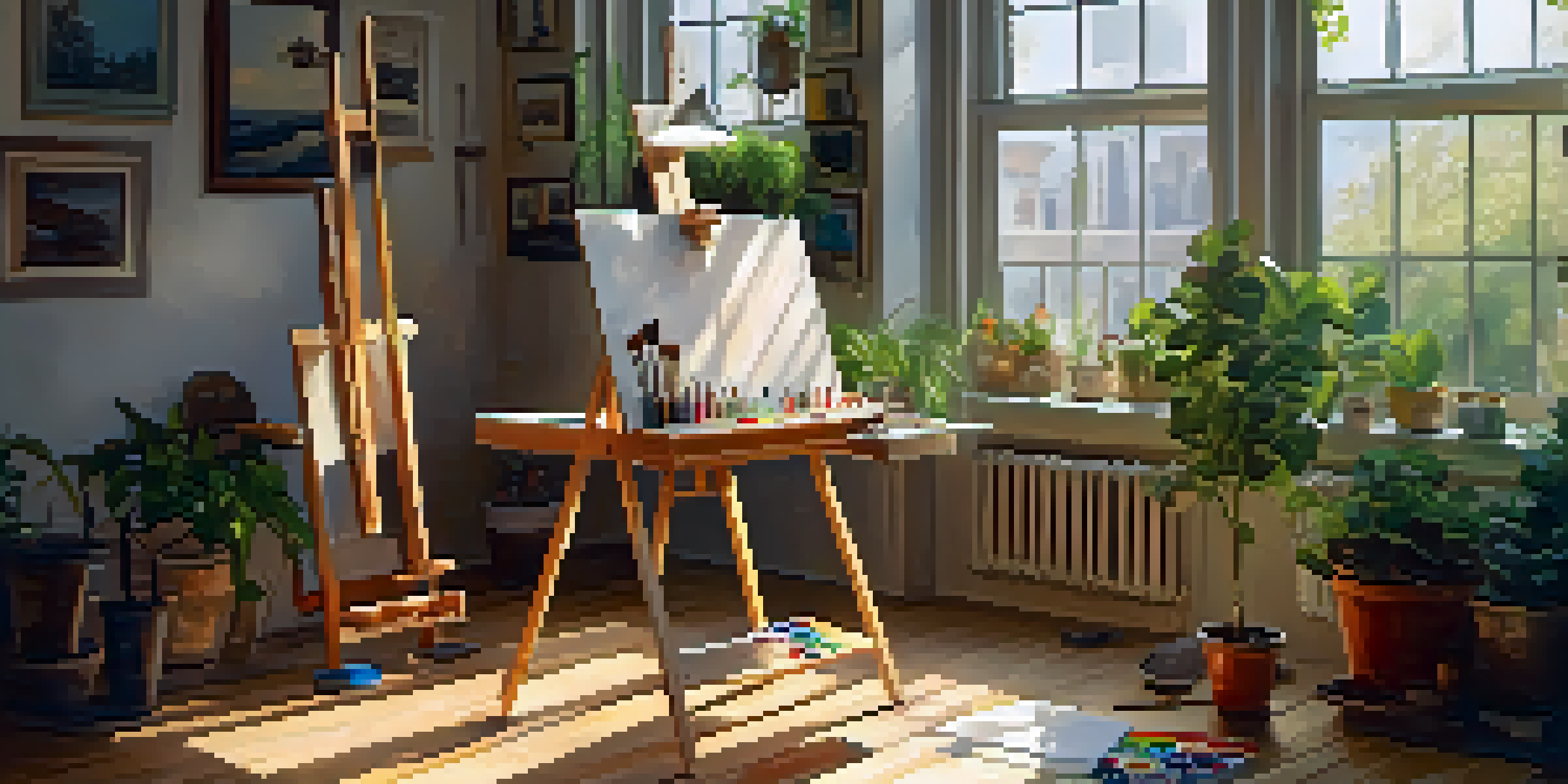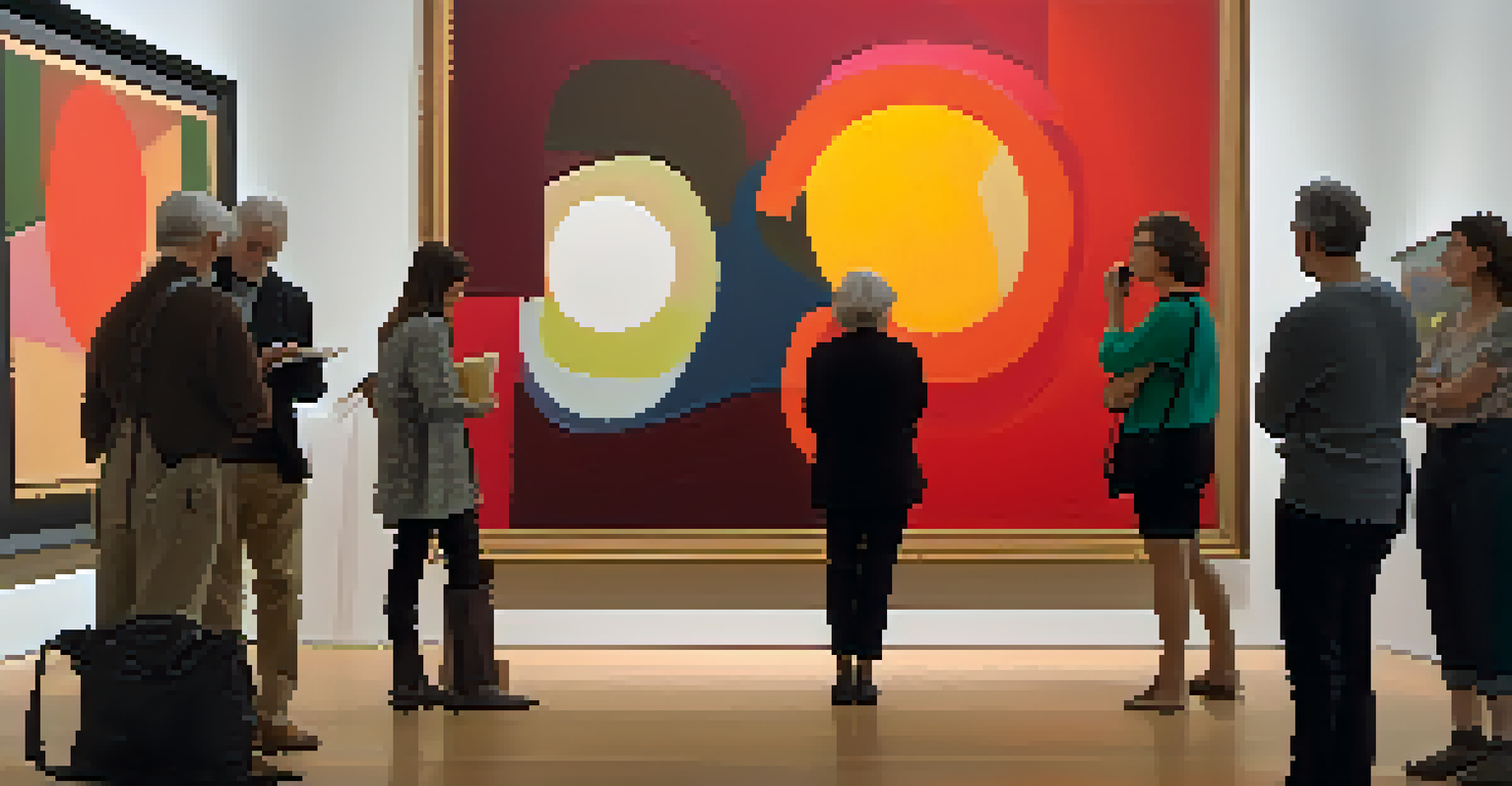The Responsibilities of Art Critics in Evaluating Paintings

Defining the Role of Art Critics in the Art World
Art critics serve as the bridge between artists and the public, offering insights into the meaning and context of artworks. They analyze various elements of a painting, such as technique, emotion, and cultural significance. By articulating their observations, critics help viewers appreciate the complexities of art that might go unnoticed at first glance.
Art criticism is not a mere opinion; it is a thoughtful exploration of meaning and significance.
Moreover, critics often provide a historical context for the artwork, explaining its relevance in relation to previous movements or societal issues. This added layer of understanding enriches the viewer's experience and fosters a deeper connection with the piece. In essence, art critics play a pivotal role in educating the public about art and its myriad interpretations.
Their evaluations can also influence the market and the careers of artists, as a positive review can propel an artist into the limelight, while a negative critique may have the opposite effect. Hence, critics carry a significant responsibility in shaping artistic discourse and public perception.
Research and Context: The Foundation of Criticism
A key responsibility of art critics is conducting thorough research before evaluating a painting. This includes understanding the artist's background, the techniques employed, and the context in which the artwork was created. Without this foundational knowledge, a critic's evaluation may lack depth and accuracy.

For instance, a critic examining a piece from the Impressionist era would benefit from knowing the historical context and the artistic principles that defined that movement. By doing so, they can better appreciate the nuances and intentions behind the work. This research is not just about the artist but also the cultural and societal influences that shape artistic expression.
Art Critics Bridge Artists and Public
Art critics provide essential insights that help viewers appreciate the deeper meanings and contexts of artworks.
Critics who invest time in research often provide richer, more informative reviews that resonate with both art enthusiasts and casual viewers. This dedication to understanding the broader context enhances their credibility and helps foster a more informed public discourse around art.
Balancing Subjectivity and Objectivity in Criticism
Art criticism is inherently subjective, as it is influenced by personal tastes and experiences. However, effective critics strive to balance their personal opinions with objective analysis of the artwork. This means acknowledging their biases while also grounding their evaluations in established principles of art theory and visual analysis.
A critic is a person who knows the way but can't drive the car.
For example, a critic might feel a personal connection to a piece due to its emotional impact, but they should also consider the technical aspects, such as composition and color theory. This balance allows for a more holistic evaluation that respects both the artist’s intentions and the viewer’s experience.
By transparently discussing their perspectives while anchoring their critiques in objective criteria, critics can foster trust and credibility with their audience. This approach not only enriches the dialogue around art but also encourages a diverse range of interpretations.
Engaging with the Artist's Intentions
Understanding an artist's intentions is crucial for art critics when evaluating paintings. This involves delving into the artist's background, influences, and the motivations behind the work. By considering these factors, critics can provide a more comprehensive analysis that honors the artist's vision.
For instance, if an artist creates a piece as a response to social injustice, a critic should explore how effectively the artwork communicates that message. This engagement with the artist's intent allows critics to assess not only the aesthetic qualities of the painting but also its emotional and societal implications.
Research Enhances Critical Evaluations
Thorough research into an artist's background and the artwork's context is crucial for art critics to deliver informed critiques.
Ultimately, this dialogue between the critic and the artist’s intentions enriches the viewer's understanding, fostering a deeper appreciation for the artwork. It transforms the critique from a mere opinion into a thoughtful exploration of meaning and significance.
Encouraging Public Discourse on Art
Art critics have a unique opportunity to spark conversations about art within the public sphere. Their reviews can encourage dialogue among viewers, artists, and other critics, leading to a richer community engagement with art. By sharing their insights, critics help demystify art and make it more accessible.
For example, a well-written critique can prompt viewers to revisit a painting with fresh eyes, perhaps sparking questions about its themes or techniques. This dialogue can take place in various forums, from art galleries to social media platforms, fostering a vibrant exchange of ideas.
Moreover, critics who actively engage with their audience can help cultivate a culture of appreciation and critical thinking about art. This responsibility extends beyond mere evaluation; it involves nurturing a community that values diverse perspectives and encourages exploration.
The Impact of Technology on Art Criticism
In today's digital age, technology has dramatically transformed the landscape of art criticism. With the rise of social media and online platforms, critics now have the ability to reach a broader audience than ever before. This democratization of art critique allows for a wider range of voices and perspectives to be heard.
However, this shift also comes with challenges. The immediacy of online criticism can sometimes lead to superficial evaluations and clickbait-style reviews. Critics must navigate this terrain carefully, ensuring that their evaluations remain thoughtful and substantive amidst the noise.
Ethics Matter in Art Criticism
Critics must approach their evaluations with honesty and respect, as their words can significantly impact an artist's career.
As technology continues to evolve, art critics have the responsibility to adapt their methods while maintaining the integrity of their evaluations. By embracing new formats and engaging with audiences online, they can continue to foster meaningful discussions about art in an increasingly connected world.
Ethical Responsibilities of Art Critics
Art critics hold ethical responsibilities that extend beyond their evaluations. They must strive to provide honest, fair, and respectful critiques, avoiding personal biases that could skew their analysis. This ethical stance is crucial in maintaining the trust of both artists and the public.
Additionally, critics should be mindful of the impact their words can have on an artist’s career. A negative critique can have lasting consequences, so it’s important to approach each evaluation with sensitivity and consideration. By focusing on constructive criticism, critics can help artists grow and improve rather than simply tearing them down.

Ultimately, the ethical responsibilities of art critics involve a commitment to integrity and respect within the art community. By upholding these values, critics contribute to a healthier dialogue around art that benefits everyone involved.